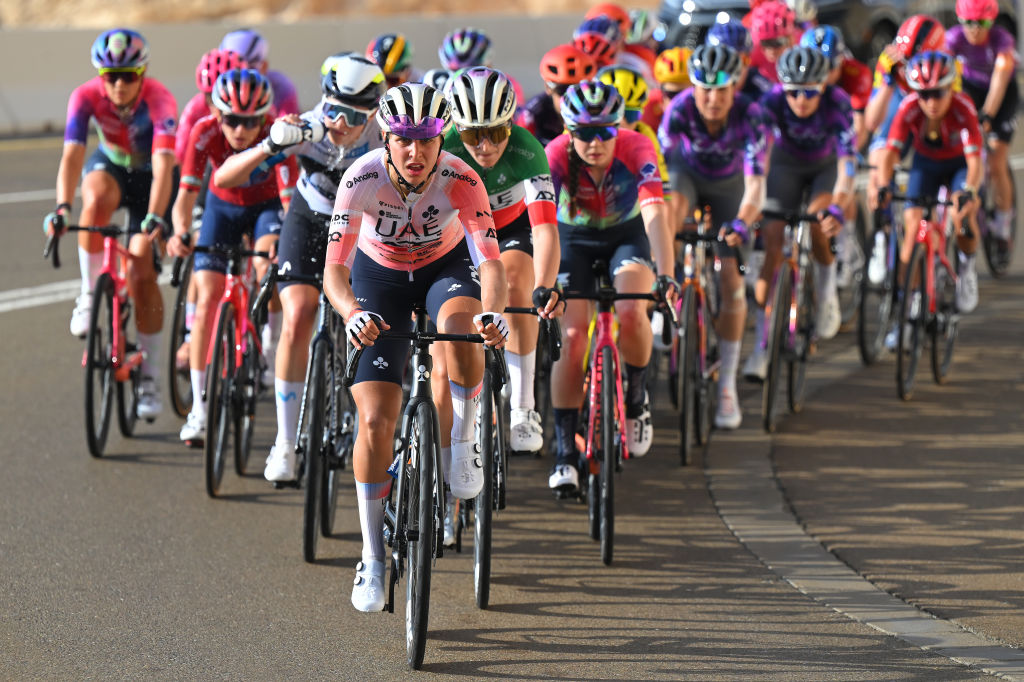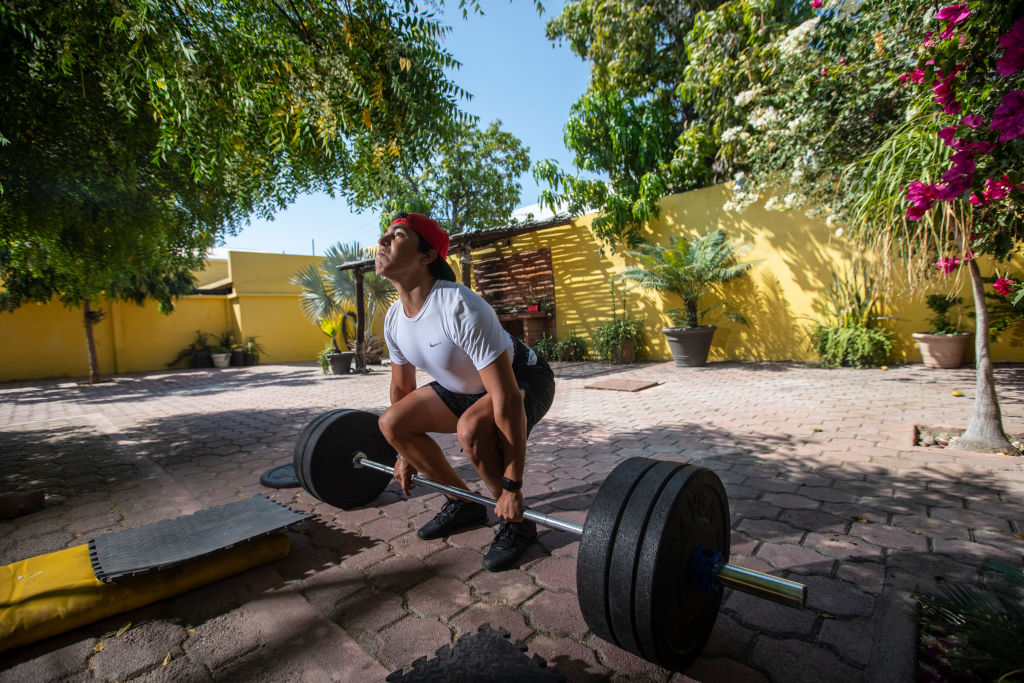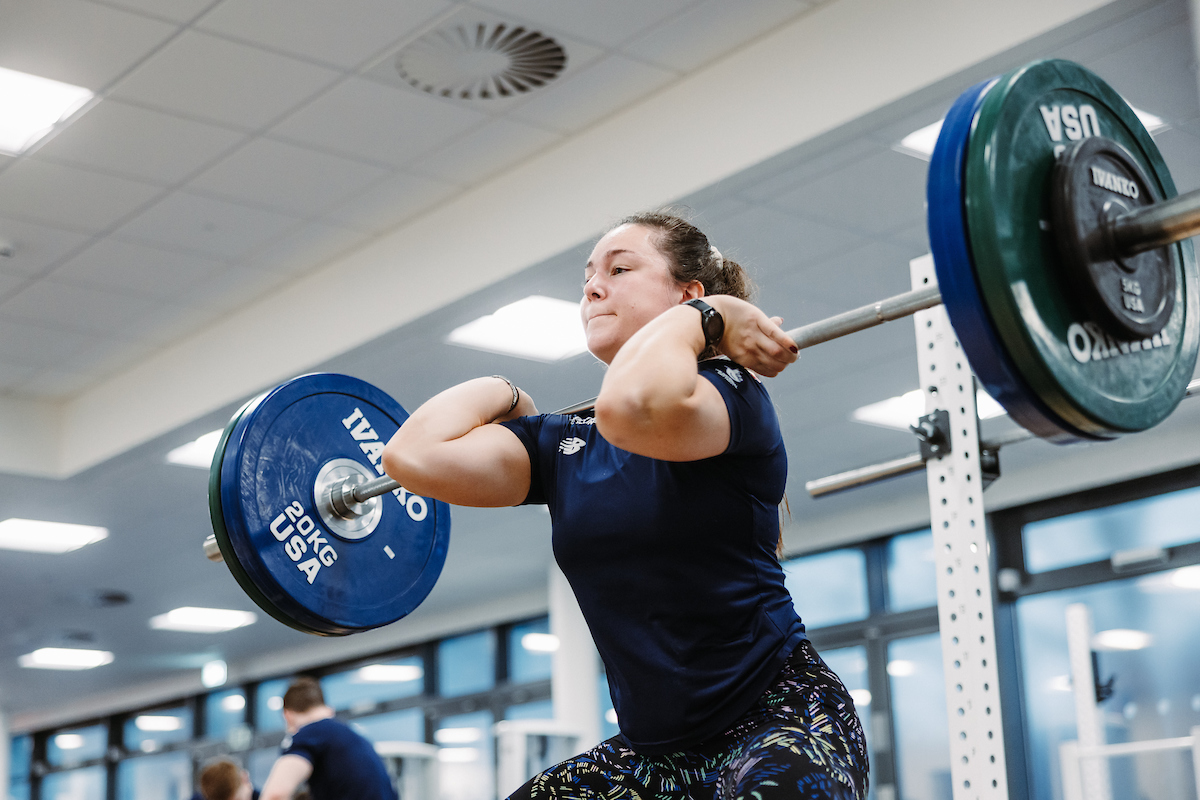
Strength training is widely associated with helping reduce injuries, building strength and an overall healthy life, but given the intricacies and demands of cycling, it’s not always straightforward.
Silvia Persico credited her gym routine for her explosive sprint finish at stage 3 at the UAE Tour earlier this year, while Tadej Pogačar’s coach said he would ramp up the rider’s strength training for this year.
“The scientific literature is pretty clear on the benefits for both recreational and elite riders,” said Luca Zenti, coach at UAE Team ADQ.
“With just a few exercises with a good technique and a good weight, you can easily get a really good narrow muscle adaptation.
“Of course, if you do too much volume in the gym, then you risk heavy legs the day after, and normally, the athlete doesn't like to feel the legs so heavy and so stiff the day after.”
How does the gym fit into a pro schedule
Given that pros spend most of their time riding their bike, fitting in strength training requires a well-designed programme and has to be adapted around races.
“When you are in preseason, you would train twice a week, then maybe once a week when you are close to a race, then on the week of an important race, you wouldn’t do gym that specific week,” said Zenti.
“For general preparation, we start with a lot of core stability and exercises which educate the athlete on how to activate specific muscle groups, like the glutes, for example.
“The progression of the load is normally from quite easy and postural exercises to maximum strength and explosivity. These are around three blocks of the preparation.”
However, given the intense calendar of WorldTour riders, it can be difficult to keep up the strength training consistently.
“The main problem is when you have a block of races in which you race a lot, maybe a couple of times a week, and that is quite tricky because you lose a lot of work,” said Zenti.
“If you lose a month of gym, then when you restart, it's difficult to go again with the same load. So, the tricky part is to try to maintain at least a bit of stimulus even once a week, always far from important races, to never go to zero adaptation again.”
Role dependent

Whether a rider is a sprinter or a climber also dictates the strength training approach, as sprinters tend to do more volume than climbers.
“For sprinters, strength work is focussed on explosive exercises where riders push the weight as fast as possible, in order to try to improve speed-velocity-based training,” said Zenti.
“Climbers normally do slightly less gym, because the big scare is about gaining too much muscle mass. If you have a proper maximum strength with a really low repetition and high recovery, normally you don't go towards hypertrophy, so it's not a problem.
"But generally, climbers do slightly less volume in the gym, and normally they don't do too much of the explosive stuff like plyometric or working with velocity-based training in the gym.”
Why are some riders not going to the gym?
Despite all the benefits, strength training remains a contentious topic within the pro road cycling world because coaches are divided on the best approach and whether to include it in an athlete’s program at all.
“Even if the evidence is pretty clear, there are still coaches who think that the gym doesn’t do that much,” said Zenti.
“Especially, for example, if a rider does proper gym in the winter and then doesn’t keep up the consistency properly during the season, then of course, you arrive in the spring and the adaptation is lost.
“I would say consistency is the key and also the tricky part, as you manage this around preparing for races.”
How to get started with strength training

When elite riders hit the gym, they have a coach to guide them. This is not possible for everyone, so it’s important to start slow and focus on technique.
“I would start with exercise to improve technique before getting to a proper periodisation of strength,” said Zenti.
“For example, use a barbell without any weight so you can start to control the body and try the technique without much risk. The better you are prepared, the more properly you will use the barbell or dumbbell to produce proper strength.
“When you're solid on that, then you can start to focus on weight and start to work on maximum strength and explosivity.
“I would recommend exercises like deadlift, squat, Bulgarian split squat, hip thrust, all exercises using the barbell that guide the cyclist to also control the posture and not just push weightlifting.”
Zenti recommends doing strength training twice a week for one hour and, most importantly, keeping this training consistent. He also suggests using free weights rather than machines.
“There are so many tools in the gym, and there are plenty of machines like leg press, leg curl, leg extensions, which sometimes can be good, but normally what I really prefer is to use the barbell as it helps you have a good control of your body too,” said Zenti.
“A good activation of the core is not just about pushing and producing strength, but also about controlling the body in producing strength.”
What does Silvia Persico’s training plan look like?

The UAE Team ADQ sprinter is renowned for her explosivity.
“In the beginning, we did more postural and maximal strength exercises, and then towards the race last month, the focus was on more plyometric and explosive exercises,” said Zenti.
“We use a lot of deadlifts, squats and Bulgarian split squats with the barbell because, also from Silvia’s point of view, it's really important to maintain a good posture.”
Max Strength Session:
- Warm-up and mobility
- Core training (3-4 exercises)
- Barbell squat 5x5, rest 2 minutes
- Hip thrust 4x6, rest 2 minutes
- Bulgarian split squat 4x6 per leg, rest 90 seconds
- Single-leg leg press 4x6 per leg, rest 90 seconds
Explosive Strength Session:
- Warm-up and mobility
- Core training (3-4 exercises)
- Barbell squat – explosive 1.0 m/s, 5x5 (using accelerometer)
- Trap bar deadlift – explosive, 4x5
- Bulgarian split squat jumps, 4x6 per leg
- Box jumps, 4x6
- Kettlebell swings, 3x6







